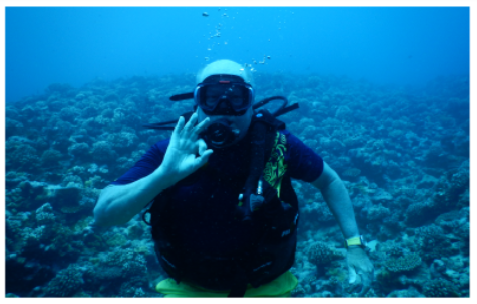Seasonal Awareness Spring 2024, SCUBA Emergencies
Boyle’s Law
P1V1 = P2V2. Ok I know you don’t like math so let me put in in simple terms. Double the pressure and the volume will be cut in half. Here is how it works.
Pressure Changes
At sea level the pressure
applied to the human body is
1 (one) atmosphere or ATM. In
terms of pressure thats 14.7
psi, 1013.25 mb or 760 mmHg.
Water is heavy and as a diver
goes down to 33ft or 10m the
pressure exerted on the body
will double and become 2
ATM. At 66ft or 20m the
pressure becomes 3 ATM.
Remember…a fluid can not be
compressed but a gas can.
Did you know
As a point of interest you
would need to go up 18,000ft
or 5,486m to see the pressure
reduced by half to 0.5 ATM
(7.34 psi 506.6 mb) This
becomes important in
understanding Mountain
climbing medical problems

SCUBA – Medical Problems
some common medical conditions you might see
We may not realize it but Alberta has a very active SCUBA
community. I actually learned to dive in 1971 and while the
equipment and overall saftey of diving has improved over the
years accidents can still happen. In this brief posting I will
outline one common issue related to diving that EMS might be
called for. This is the first posting that I will make on SCUBA
with more to follow.
Most medical issuses associated with diving are related to
understanding the gas laws. The first law I will discuss is Boyle’s
Law. Not understanding the effects of pressure changes on the
human body can cause problems going down (decending) or
coming up (assending).
Most of the pressure changes happen within the first few feet or
meters of a dive so problems can happen at the begining of the
dive or at the end. This because the amount of change happens
closer to the surface. Thats just the way physics work
Mask Squeeze aka
Facial Barotrauma
The pressure on the face
increases as a diver starts to
decend and if the pressure
inside the mask is not equalized
the mask will be sucked into the
face causing some problems.
Mask Squeeze is the most likely pressure related problem to be
first encountered by a diver. Particularly a new diver.
It is not always a serious problem and will usually clear up on it’s
own but if the diver is experiencing eye pain, visual problems or if
you notice somthing like a hyphema (blood in the anterial
chamber of the eye) then that diver will need to be transpported
and seen by a physcian.
As always follow medical control guidelines
Well…that it for this posting. I look forward to posting another
dive related medical condition. Next time less on physics and
more on dive related trauma.

Blog Post by Peter Symons
References
British Sup-Aqua Club Hull Branch. (n.d.). The Mask Squeeze Page. Retrieved from BSAC Hull Branch : http://www.bsac14.org.uk/the-mask-squeeze-page.html
Good Dive. (n.d.). Mask Squeeze. Retrieved from Good Dive: https://www.gooddive.com/scuba-diving-glossary/mask-squeeze.htm

Peter is an Alberta ACP with 40 years of experience delivering a combination of both Educational and EMS services. He received the Medal for Exemplary Service EMS in 2005 (with bar in 2015). His varied background ranges from military medic to ski patroller to owner of the Jasper Ambulance service in the days of private ambulance in Alberta. He worked as an instructor in Prehospital Care at Portage College training EMTs for 5 years. Peter teaches ACLS, ACLS-EP and ITLS courses and is an Instructor Trainer for those courses. He also qualified as an AWLS Instructor. Peter’s entire career as an ACP was spent in the mountain parks both, in Jasper and Banff. Peter was a contributor and Subject Matter Expert for the HSFC First Aid textbook and ITLS Duty to Respond text. His passions are cycling, ocean kayaking and international travel. Peter qualified as a SCUBA diver in 1971 and has been enjoying a return to the sport since 2020.


